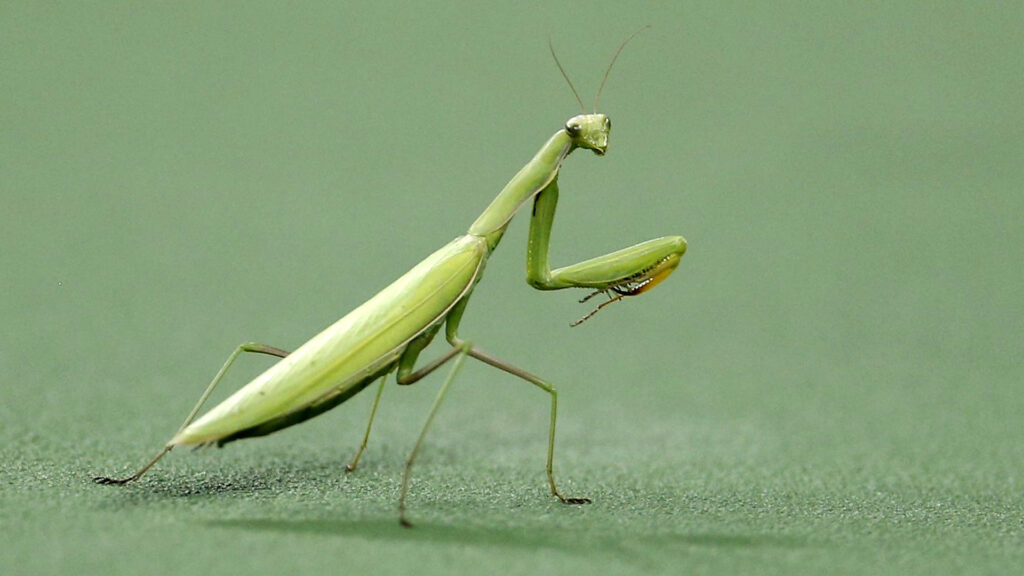The praying mantis, with its iconic triangular head and strikingly elongated body, is one of the most fascinating insects in the animal kingdom. Renowned for its unique hunting style and impressive agility, the mantis also possesses an intriguing ability: flight. But not all praying mantises can take to the skies in the same way. In this article, we explore the fascinating world of mantis flight, answering the question: Do praying mantises fly?
The Anatomy of a Flying Praying Mantis
Praying mantises belong to the order Mantodea, and there are over 2,400 species of these predatory insects worldwide. Of these, many have wings and are capable of flight. However, the ability to fly varies depending on the species and their stage of life.
A typical praying mantis has two pairs of wings:
- The front wings, or forewings, are narrow and leathery, serving as a protective covering for the more delicate hind wings.
- The hind wings are larger, more membranous, and are used for actual flight.
The size and strength of these wings are essential for determining whether a mantis can fly effectively. While some mantis species are adept flyers, others may have shorter wings or be flightless altogether.
When Do Praying Mantises Fly?
Praying mantises do not fly from the moment they hatch. They undergo several stages of growth before becoming capable of flight. After hatching, the mantis is in the nymph stage, resembling a miniature adult but lacking wings. As it matures, it molts several times, eventually reaching the adult stage when its wings fully develop.
At this point, the mantis is ready to fly, though not all species are equally proficient at it. In many species, flight is more of a means of escape than a primary mode of transportation. Praying mantises often take to the air to avoid predators or to move to more favorable hunting grounds.
How Do Praying Mantises Fly?
The flight of a praying mantis is a fascinating spectacle. When they take off, mantises typically use their powerful hind wings to propel themselves into the air. Their front wings serve as stabilizers, helping them maintain balance and direction. This gives them a somewhat jerky, erratic flight pattern that is quite different from the smooth flight of many other insects, like dragonflies.
Praying mantises generally fly in short bursts, often hovering or gliding for a moment before landing. Their flight style is typically less graceful compared to other insects, and they usually don’t engage in long-distance flights. Instead, they prefer to stay close to the vegetation, making quick aerial escapes when threatened.
Do All Praying Mantises Fly?
Not all species of praying mantises are capable of flight. Some, particularly those found in cooler climates or in areas with less dense vegetation, have short wings or are completely wingless. In these species, flight is not a survival necessity, as they rely on camouflage and stealth to catch prey. These flightless mantises are just as skilled at hunting as their flying counterparts, but they achieve their success through different means, such as ambush predation.
Why Do Praying Mantises Fly?

Flight for a praying mantis serves several important purposes:
- Escape from Predators: Praying mantises are vulnerable to a variety of predators, including birds, frogs, and larger insects. Flight gives them a quick escape option when they sense danger.
- Finding Mates: Like many insects, praying mantises engage in mating flights. During mating season, males fly to find females, often in a competitive display of aerial prowess.
- Hunting: Although they are primarily ground hunters, some mantis species fly to new hunting grounds when resources are scarce or to find more suitable prey.
Conclusion
So, do praying mantises fly? Yes, many species can. However, their flight capabilities vary depending on their species and environmental factors. Whether for escaping predators, finding mates, or seeking new hunting areas, flight plays an important role in the life of a praying mantis. While not the most graceful flyers, these remarkable insects show us that even in the insect world, the ability to take flight is a key survival skill.



